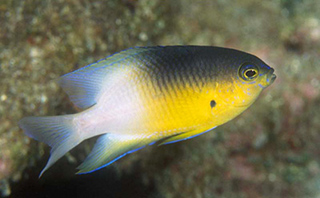NOAA-supported researchers studying the potential coral ecosystem connectivity of the deep (192–256 ft/60–80 m), mesophotic reefs of Pulley Ridge and the shallower reefs downstream in the Florida Keys found that bicolor damselfish populations on shallower reefs may owe some of their sustainability to mesophotic reefs.

In comparison to shallower reefs, the bicolor damselfish populations on mesophotic reefs consist of older and larger bicolor damselfish (Stegastes partitus). Specifically, Pulley Ridge is home to what are known in fish biologist parlance as BOFFFFs (big, old, fat, fecund, female fish). These deeper reefs rely on older females investing in and producing high quality offspring with a better chance of survival. The genetic similarity of bicolor damselfish populations in the Western Atlantic coupled with the connectivity of reefs by ocean currents suggest these mesophotic reefs are potential refuges for bicolor damselfish and possible sources of stock for shallower reef populations.
The project, led by the University of Miami, investigates the role that mesophotic reefs may play in replenishing key fish species, such as grouper and snapper, and other organisms in the shallower reefs downstream in the Florida Keys National Marine Sanctuary and Tortugas Ecological Reserve. This is particularly important for management of species under considerable commercial and recreational fishing pressure.
For more information, contact Kimberly Puglise.
Citation: Goldstein, E. D., E. K. D’Alessandro, and S. Sponaugle. 2016. Demographic and reproductive plasticity across depth distribution of a coral reef fish. Scientific Reports 6: 34077.
